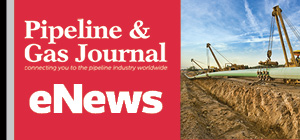Whitepapers

As a low-carbon alternative to conventional natural gas, renewable natural gas (RNG), or biomethane, has the potential to play a useful role in North America’s path towards decarbonisation. RNG is already seeing tremendous growth in North America, where the number of projects has nearly doubled in the last five years. So, what does the future hold?
Download Whitepaper
The Carbon Intel Forum presents the Carbon Intel eBook, a hand-picked collection of expert articles exploring carbon reduction technologies in the energy industry. The forum will feature information from the largest and most innovative players in global CCUS, with a special focus on applied and emerging CCUS and carbon reduction technologies required to achieve net-zero. Download the eBook today for a preview of low-carbon articles from the energy industry's top media.
Download Whitepaper
With assets installed in remote locations, OCP Ecuador needed a maintenance solution that would enable them to predict and prevent equipment failures before they occurred. Using prescriptive maintenance, the company can now continuously monitor its critical assets for impending failure. In this paper, learn how OCP Ecuador reduced maintenance costs by 25% per year and increased engine overhaul from 16000 to 19200 hours, a 20% improvement in uptime.
Download Whitepaper

External stresses threaten the integrity of oil & gas pipelines and, especially, the external barrier systems that protect pipes from corrosion. Dr. Jeffrey D. Rogozinski, Sherwin-Williams Global Product Director – Fusion-Bonded Epoxy/Pipe, sheds light on a next-generation dual-layer corrosion and abrasion protection technology that not only offers optimal protection for oil and gas pipelines but also saves total applied cost in one robust solution.
Download Whitepaper
Sponsored by Dragos, the Ponemon Institute’s report on the State of Industrial Cybersecurity finds that cultural and technical differences between traditional IT best practices and what is possible in OT increases an organization’s risk for costly cyber incidents – and the average cost to detect, investigate, and remediate an event.
Download the full report now for more about the state of industrial cybersecurity in the United States, including:
- Program maturity of securing operational technology networks across industries.
- What industrial organizations are doing to secure ICS/OT environments.
- OT cybersecurity investment, priorities, and accountability.
- The cause, consequences, and cost of an OT cybersecurity incident.

Preventive and Mitigative (P&M) regulations such as 49 CFR 192.935 for Gas Transmission Pipeline Integrity Management have traditionally focused on physical risks and threats to pipeline assets.
The non-physical risk of organizational failure has not been stressed enough. Yet, this risk is tied to some of the most high-profile and damaging pipeline incidents of the last 20+ years.
Transmission operators can use Pipeline SMS (PSMS / API 1173) as a method to root out organizational failure as part of their P&M program. Download our whitepaper to learn more about:
- PSMS as an Effective Prevention and Mitigation Methodology.
- How API 1173 Addresses Organizational Failure.
- The Value of Executing the Full Plan-Do-Check-Act (PDCA) Cycle.
- The Use of Tools to Achieve Natural Compliance for Prevention & Mitigation.

Facing market volatility and pressure to reduce emissions, the oil and gas pipeline industry requires high financing levels to fund its capital projects and operations. The industry must also compete with other economic sectors for scarce investor resources. To better navigate these growing challenges, pipeline companies must embrace innovation and digitalization. Download our executive brief to learn how integrating your physical and digital pipeline assets improves business decision-making and operational efficiency.
Download WhitepaperThe pipeline industry has been tasked with implementing a Pipeline Safety Management System (PSMS) to support the goal of zero incidents. Stakeholder Engagement is a key element that supports the evaluation of the organization’s safety/quality culture in terms of the Plan, Do, Check, Act methodology required by the API 1173 Recommended Practice. Download our whitepaper to gain an understanding of how to implement software that supports your operation’s PSMS journey to zero incidents.

- Kinder Morgan Proposes 290-Mile Gas Pipeline Expansion Spanning Three States
- Valero Plans to Shut California Refinery, Takes $1.1 Billion Hit
- Three Killed, Two Injured in Accident at LNG Construction Site in Texas
- Tallgrass to Build New Permian-to-Rockies Pipeline, Targets 2028 Startup with 2.4 Bcf Capacity
- TC Energy Approves $900 Million Northwoods Pipeline Expansion for U.S. Midwest
- U.S. Pipeline Expansion to Add 99 Bcf/d, Mostly for LNG Export, Report Finds
- Enbridge Adds Turboexpanders at Pipeline Sites to Power Data Centers in Canada, Pennsylvania
- Great Basin Gas Expansion Draws Strong Shipper Demand in Northern Nevada
- Cheniere Seeks FERC Approval to Expand Sabine Pass LNG Facility
- Heath Consultants Exits Locate Business to Expand Methane Leak Detection Portfolio



